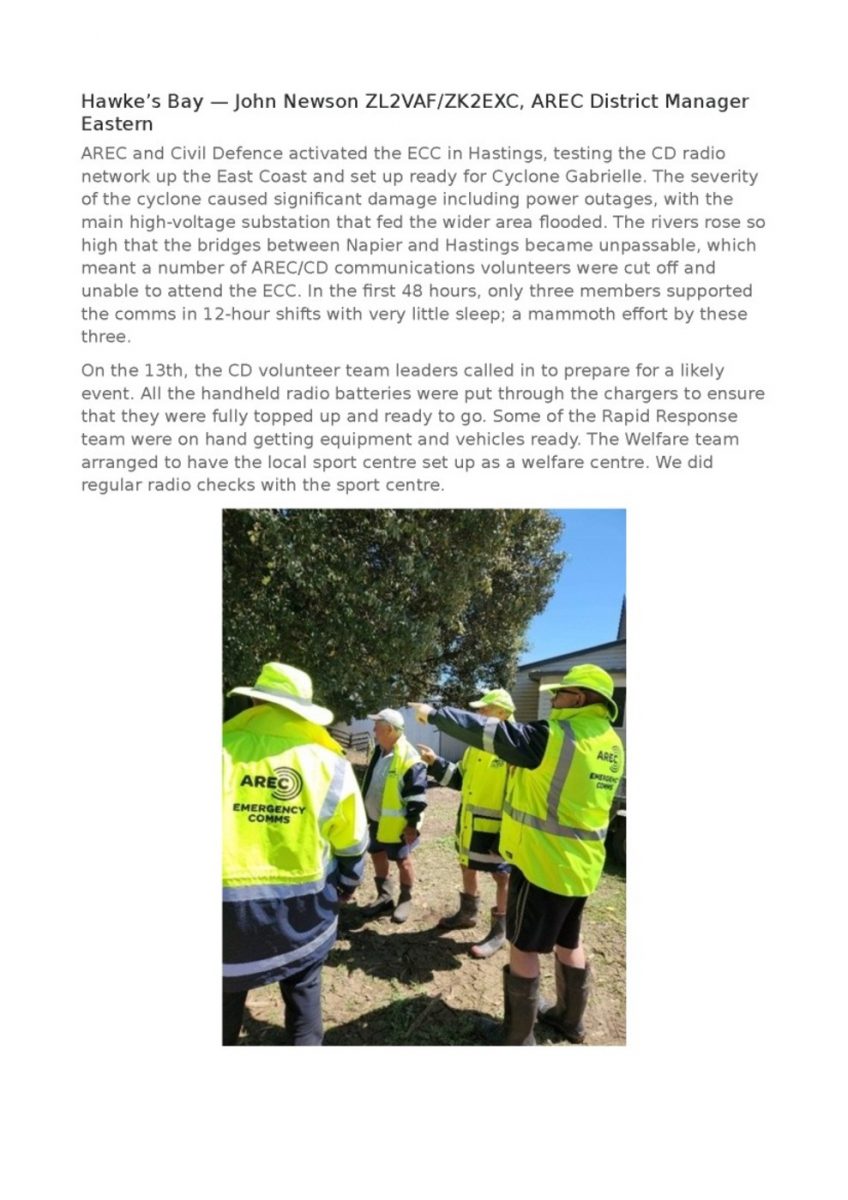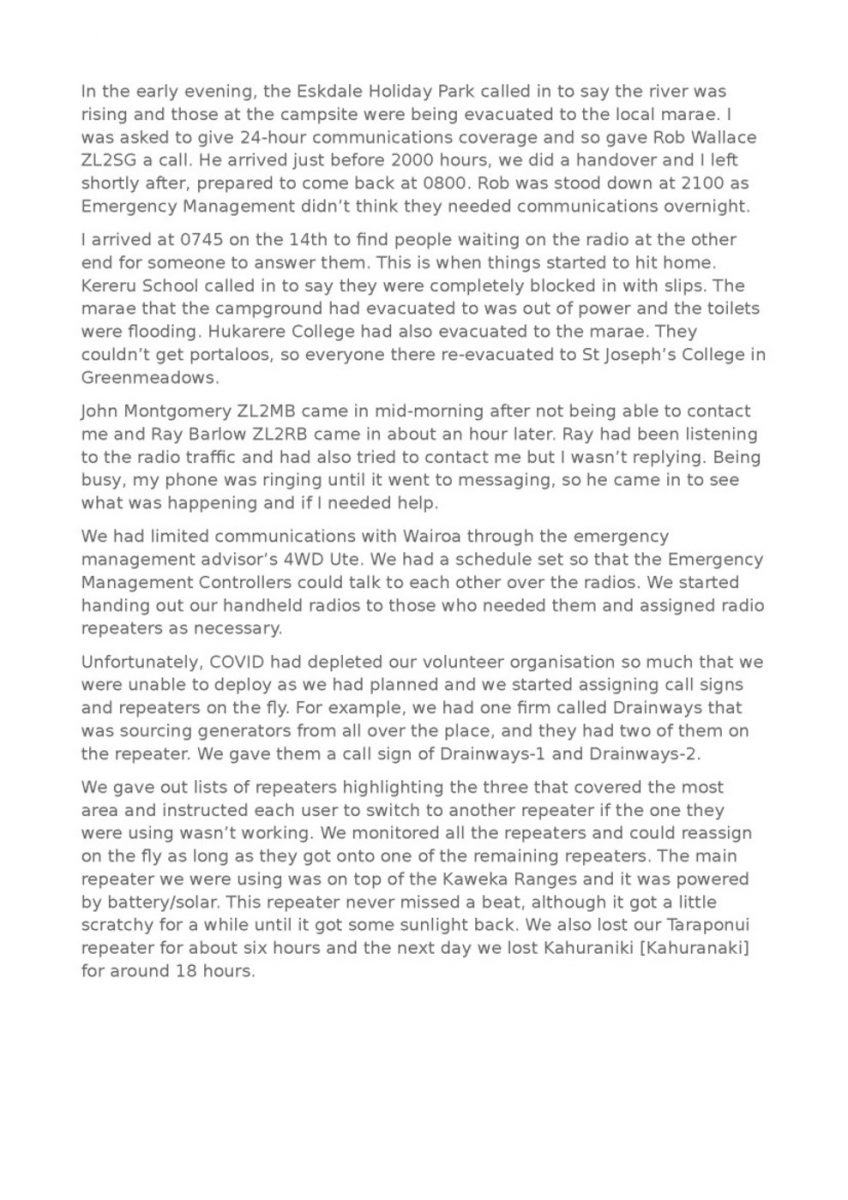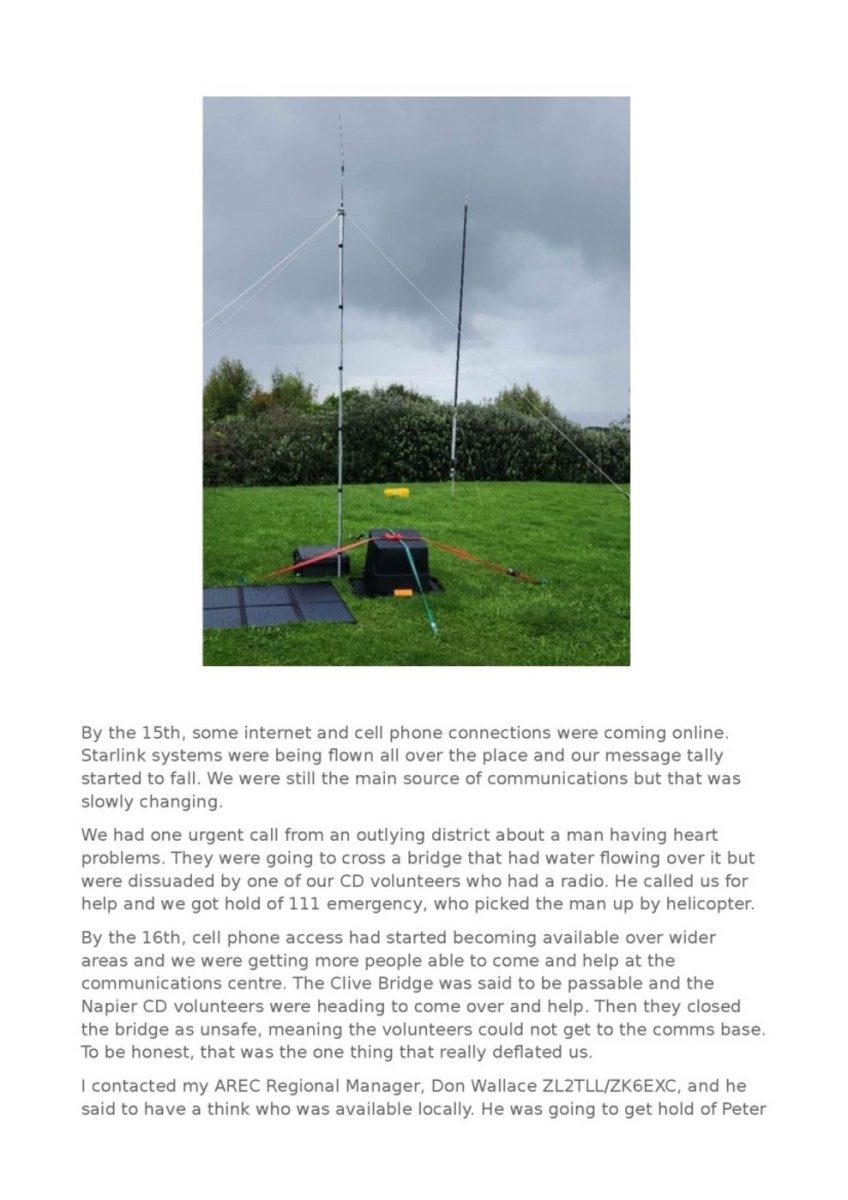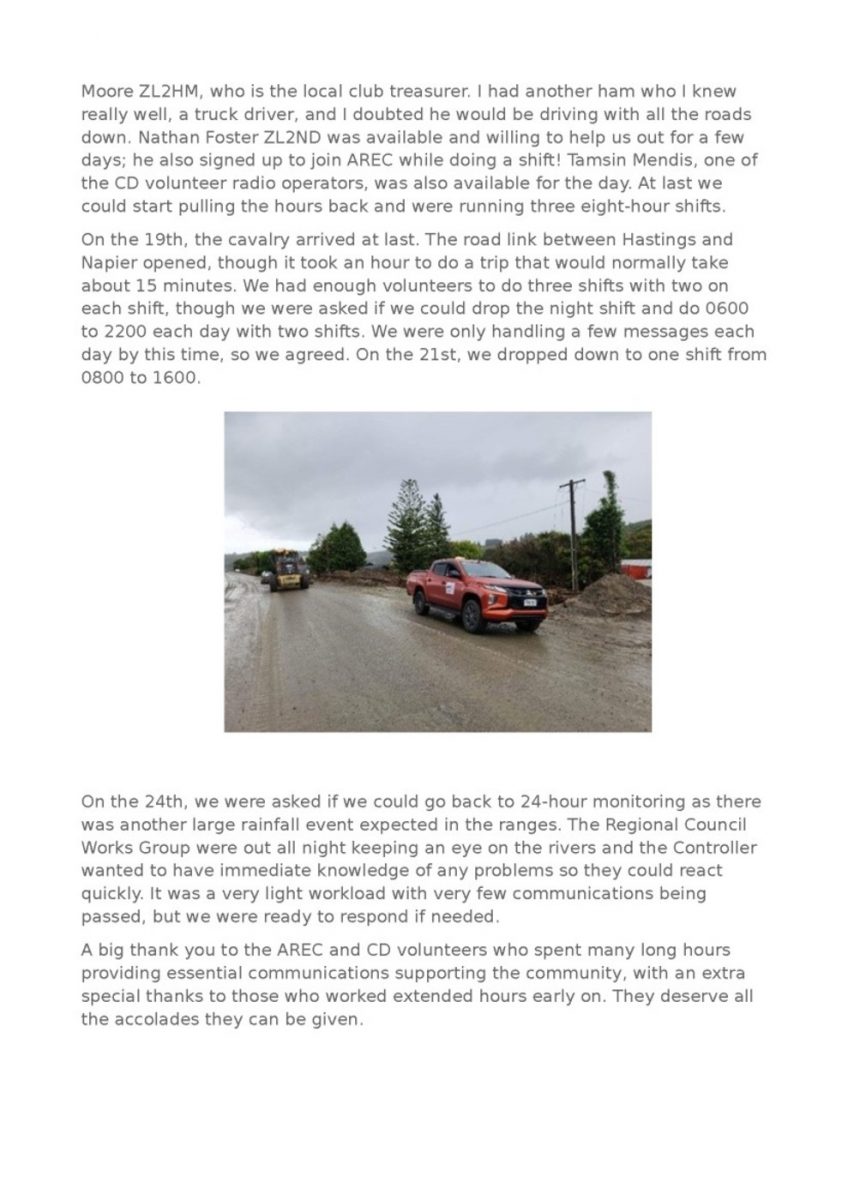Te Tairawhiti (Gisborne Region) — Mike Mather ZL2CC, Volunteer
Tairawhiti was hit really hard, with all communication going out for a lengthy period. Long before the last cyclone hit the North Island, a small group of hams set up emergency communications via ‘HF’ radio to enable the passing of messages from Gisborne area to the outside world. The hams in Gisborne area were Roger (ZL2RC), Tom (ZL2MOT) and Mike (ZL2CC) and the ‘out of town’ station was Barry (ZL2BJA) in Palmerston North.
As soon as Cyclone Gabrielle hit over the night of the 13th and morning of the 14th, the ‘net’ (as they are called) sprang into action. They kept regular contact with Barry ZL2BJA for days and passed on several personal messages via the radio where Barry sent them off as emails to the various people who had requested such information.
As Mike ZL2CC is located in Te Karaka (where some of the worst flooding was and about 80% of the houses had water through them), many messages were sent from the local township, along with reports of damage, road conditions, etc.
It wasn’t long before poor Barry ZL2BJA was inundated with requests, as other hams from all over the country were asking him for information about family and friends in the Gisborne and Hawke’s Bay areas. Luckily, he was joined by other licensed amateur radio operators listening in and helping send emails, etc, and in some cases actually visiting houses to perform welfare checks on their behalf.
Our team used HF radio and it was just as well as the internet was down, power was out and the cell phones dead. The local VHF and UHF repeaters were set up to be used in the Bay of Plenty and Hawke’s Bay, which were hit hard and had their own communications problems as well.
Barry ZL2BJA and others did an excellent job and I know it would have been hard work taking messages and information, passing it on usually by email, and sometimes by any means possible. This is what the amateur radio community are trained to do; to always be ready to help out in an emergency such as this.
You may think we are geeks, but we can be useful and helpful geeks.

















Do you know something about this record?
Please note we cannot verify the accuracy of any information posted by the community.